Chinese investors have splashed out close to $37 million on Barossa Valley real estate
CHINESE and other foreign investors are riding a wave of renewed optimism in the state’s wine sector after accumulating swathes of prime real estate across the Barossa Valley. See who owns which parcels of land.
- Australian wine export value reaches highest level in 15 years
- Accolade Wines completes deal to acquire Grant Burge Wines
- Chateau Yaldara sold to Chinese-owned company 1847 Winery
- Barossa Valley guide: 20 best-kept secrets according to locals
CHINESE and other foreign investors are riding a wave of renewed optimism in the state’s wine sector after accumulating swathes of prime real estate across the state’s premier wine regions.
As wine exports continue to surge on the back of a booming Chinese market, foreign investors have been snapping up vineyards and wineries in the Barossa Valley and McLaren Vale, with local landowners cashing in on the unprecedented level of interest.
The Advertiser and wine business advisory firm Langley & Co. have analysed close to 100 of the biggest Barossa Valley and McLaren Vale vineyard and winery deals in the five years from July 2013.
The analysis reveals Chinese investors have been the most active group of foreign buyers in the Barossa Valley, splashing out close to $37 million on ten operations in the region.
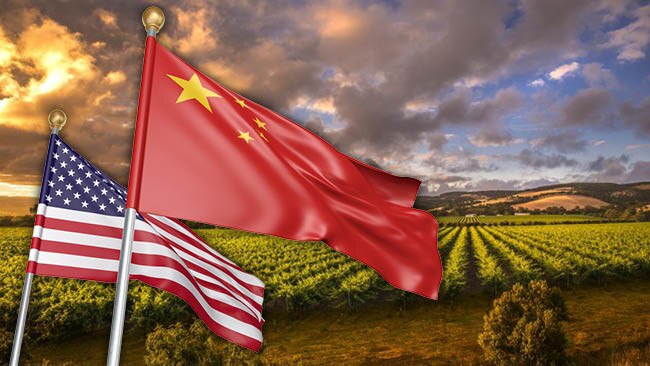
Viewing on a mobile? It might be easier to see this map here.
1847 Winery’s $15.5 million acquisition of the historic Chateau Yaldara in 2014 headlines the list of Chinese-led deals, while Chinese interests were also behind the acquisition of Cimicky Wines and its 32 hectare Lyndoch vineyard in July.
Max’s Vineyard at Lyndoch and Summers Hill Vineyard at Flaxman Valley also sold to Chinese groups in recent years, while the 30 hectare Greenock Creek Wines operation is understood to be under contract with a Chinese buyer.
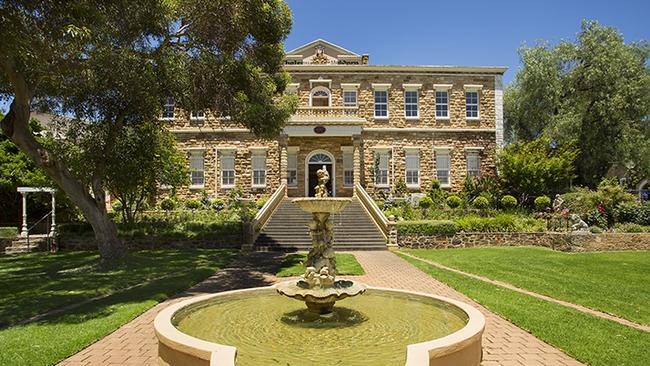
Langley & Co. director Stephen Strachan, who sells wine businesses and real estate across Australia, says around 50 per cent of inquiries for South Australian wine assets are fielded from Chinese groups.
“Over the last five years the increase in Chinese interest has been dramatic — and it’s been very much a focus on the Barossa,” he said.
“My view is that the Barossa is extremely strong in China because of what Treasury Wine Estates has been able to do with Penfolds, and I think there's been significant halo or trickle down impact.
“Even though Penfolds is not solely a Barossa brand it’s seen as a Barossa brand. And then associated with that you’ve got strong demand in China for red wine, and when it comes to red wine the association with Australia is typically Shiraz — and all of those factors lead to the Barossa.”
Mr Strachan says a key motivation for Chinese buyers is the ability to market wines that have “origin in Australia”.
“The ability to own land in Australia is a pretty attractive proposition for Chinese parties,” he said.
“There’s a lot of talk about Chinese parties looking to get money out of China into Australia and that may well be a motivation as well.
“But it’s more about being able to say to people they’re selling wine to that its origins and roots are in Australia.”
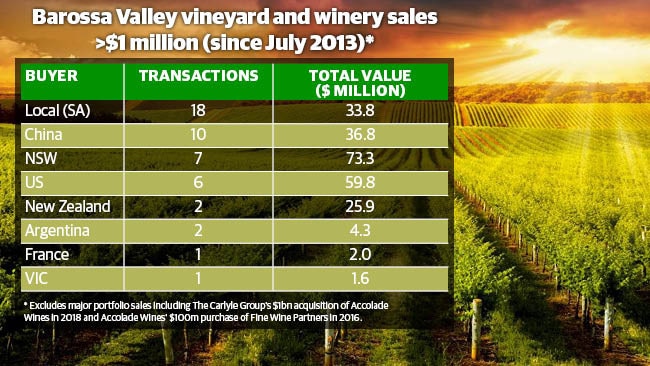
While Chinese groups have been most active in recent years, US wine investors also command significant holdings in the Barossa Valley, bolstered by The Carlyle Group’s $1 billion acquisition of Accolade Wines earlier this year, which included well known brands Grant Burge Wines and St Hallet’s.
Other US investors including tech billionaire Pete Kight of Torbreck and investment banker Bill Jahnke of Murray Street Vineyards have boosted their Barossa Valley holdings, while Argentinian oil baron Alejandro Bulgheroni has established a foothold in the region through acquisitions of Greenock Farm and Owens Own Vineyard.

Barossa Grape & Wine Association chief executive James March welcomed international investment interest in the region.
“The Barossa operates in a global market so we need to be aware of and open to opportunities that come from global capital and the marketplace — that’s part and parcel of operating in our industry,” he said.
“The injection of capital, wherever it comes from, creates opportunities, increases investment and supports the regional economy.
“In many of the recent sales where the purchaser has been international, we’ve still seen employment locally — winemakers, winery managers and viticulturists for example — and we’ve seen a continued connection with the region’s values.
“Foreign investment can open up additional routes to market, additional skills being brought into the region, and we welcome investors that are a good fit in the region and who retain a strong connection to the community and what the Barossa stands for.”
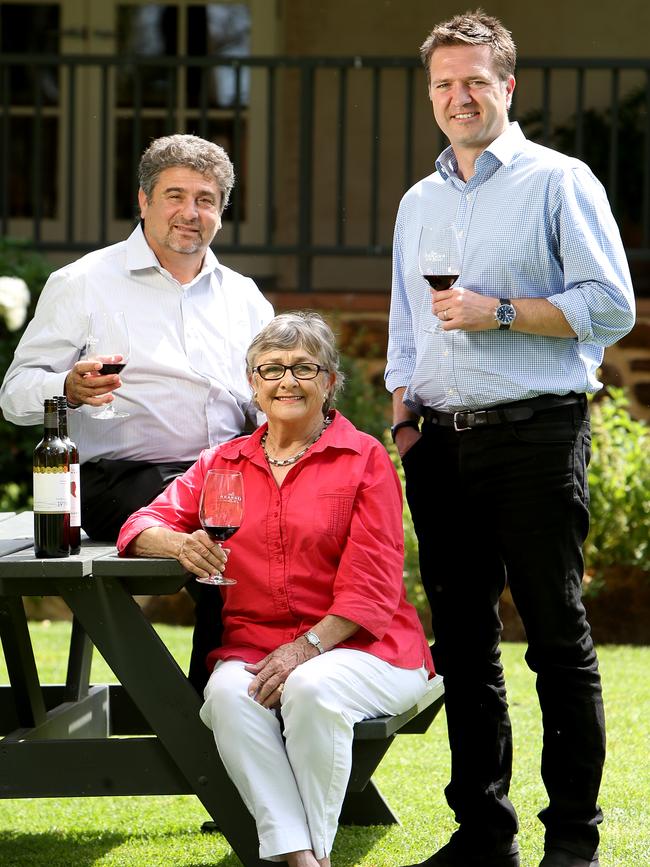
While foreign investors have continued to develop a thirst for Barossa Valley real estate, the biggest single brand deal in recent years was the $57 million sale of Peter Lehmann Wines to the acquisitive Casella Family Brands group out of Griffith in NSW.
South Australia’s well known wine families have also been active, spending close to $34 million across 18 acquisitions.
In 2013, Warren Randall’s Seppeltsfield paid $5.1 million for a portfolio of vineyards formerly owned by Tanunda wine identity Carl Lindner, while the Twelftree, Roennfeldt, Calabria, Hickinbotham, Binder and Deans families have also added to their portfolios.
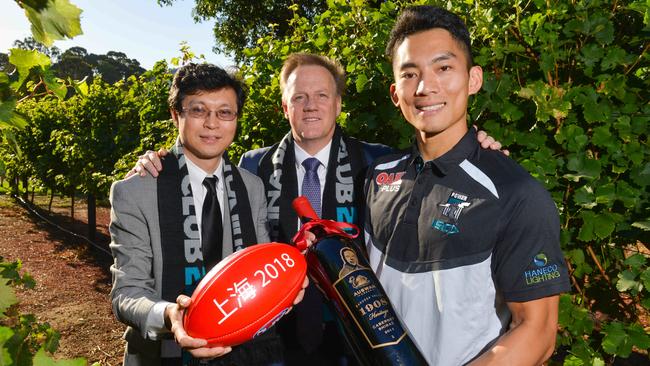
Homburg Real Estate’s David Braunack said renewed demand for Barossa Valley vineyards had boosted prices by “double or triple over the past four years or so”, with premium plantings fetching up to $250,000 per hectare.
“Over the past year there’s been massive Chinese interest but before that we had the Delegats, Casellas and Calabrias really looking to boost their footprint in the Barossa,” he said.
“We’re on the world stage for Shiraz so when people come here to invest they want Barossa Shiraz.
“The Baby Boomers are getting older and some of the properties have been in the family for generations — many of the younger generations are tertiary educated and don’t necessarily want to be in the vineyard.
“We’re coming to the end of an era. Four or five years ago they were struggling to survive and now they’re being offered really good money so it’s a good opportunity.”

While prices are on the rise in the Barossa Valley, they remain well below other premier wine regions, including Napa Valley and Bordeaux where seven-figure sums are becoming the norm for a hectare of premium plantings.
But Mr Strachan expects global competition for Barossa Valley property to intensify as exports continue to surge and wine groups attempt to secure their supply of grapes.
“China’s been strong for Australia and growing for at least five years but the last couple of years it’s been phenomenal — 50 per cent growth last financial year into China — that’s a game changer for the wine industry’s prospects,” he said.
“Vineyard values have risen significantly, grape prices have risen significantly and bulk wine prices have risen significantly — that reflects the shortage that has emerged in the Australian wine category and you’d have to conclude that the industry’s pretty buoyant at the moment.”
NEXT WEEK: We take a look at vineyard ownership in McLaren Vale

